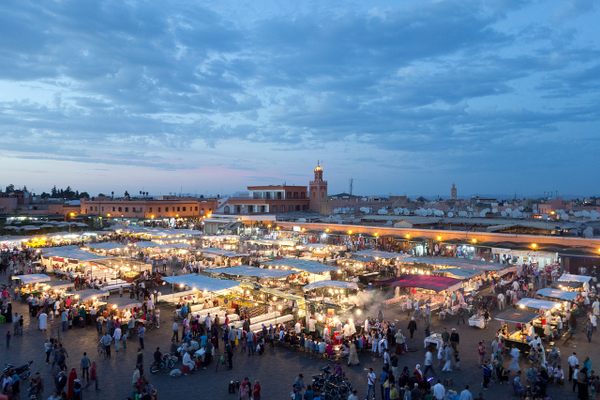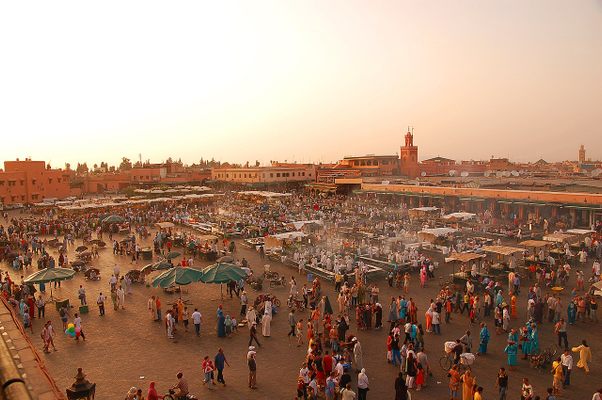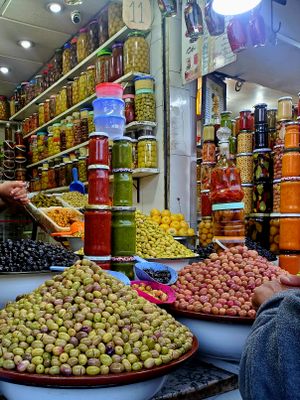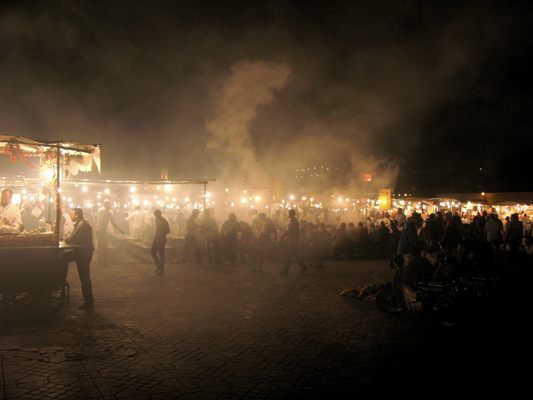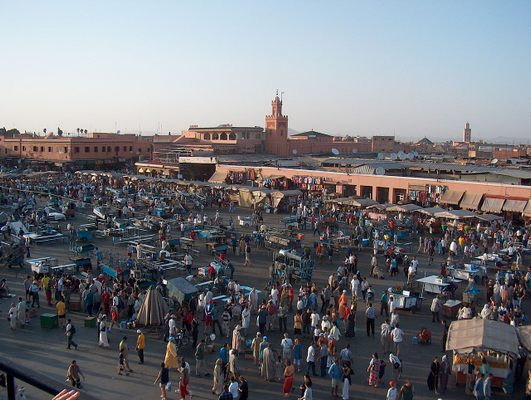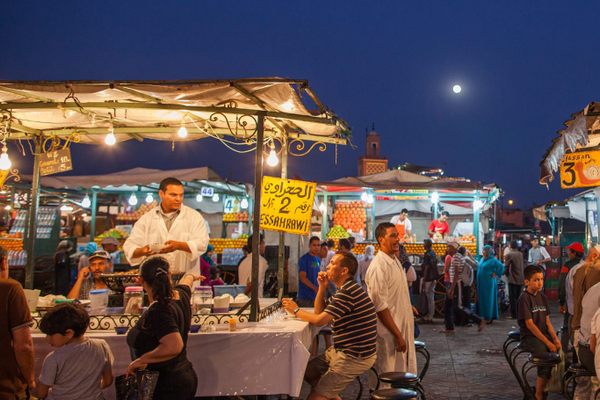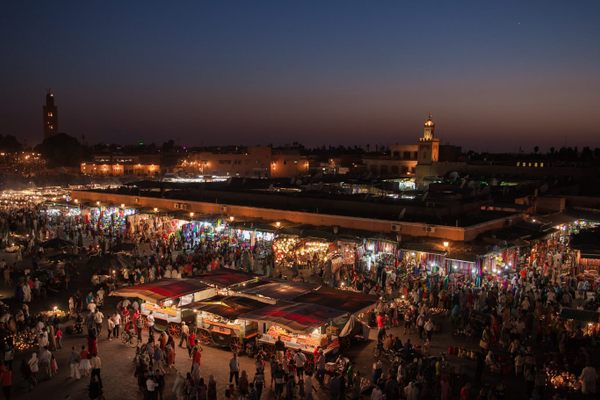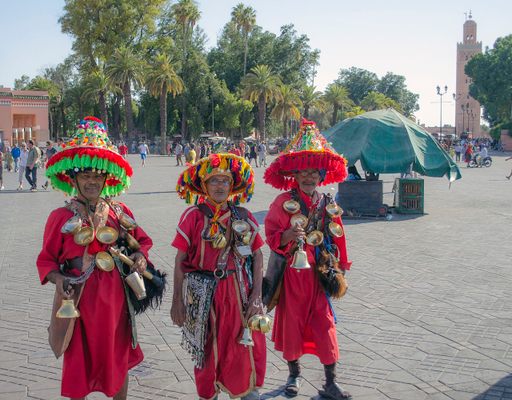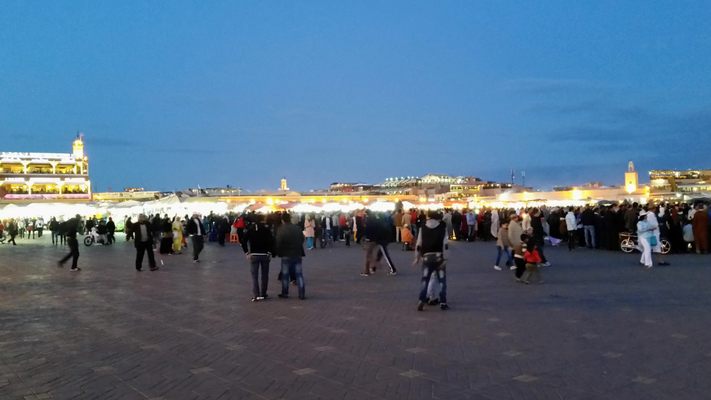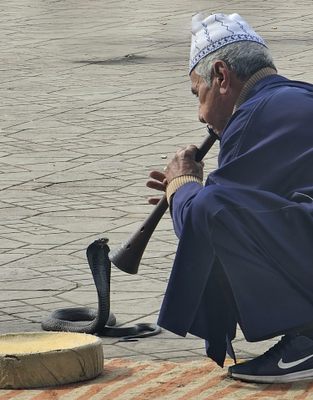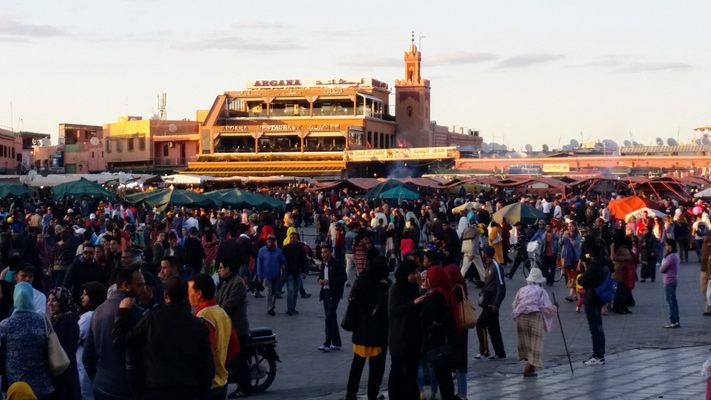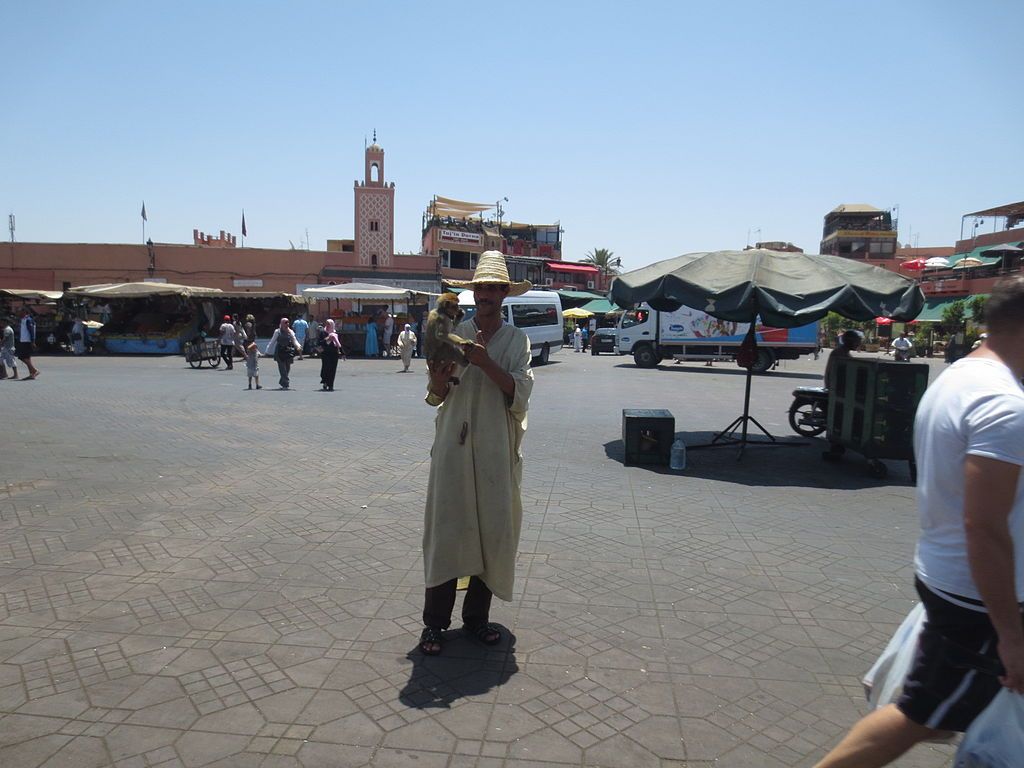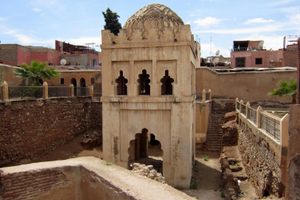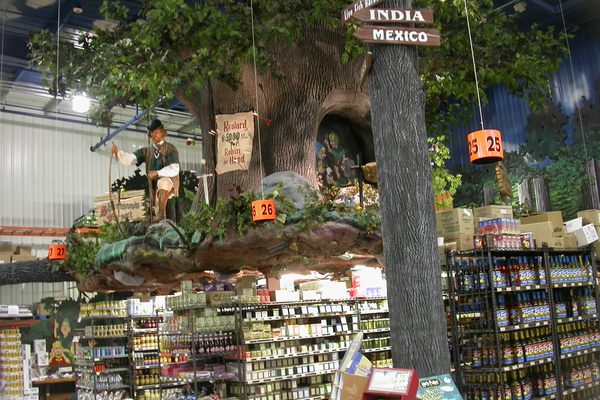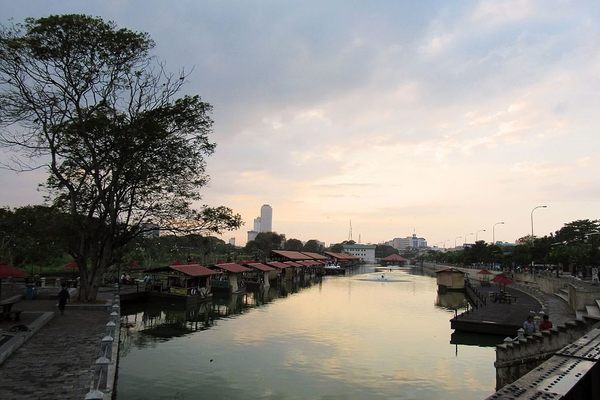About
For a thousand years, Jemaa el-Fna has served as a gathering place and market at the heart of Marrakesh. Fortune tellers, snake charmers, poets, and storytellers come to entertain the crowds, helping to create an intoxicating atmosphere whose cultural importance inspired UNESCO to create its “Masterpieces of the Oral and Intangible Heritage of Humanity.”
Jemaa el-Fna dates back to the founding of Marrakesh by the Almoravids in 1062 and later grew in importance when the Almohads took the city in 1147, renovating the square and the city around it. For almost a thousand years, the square has functioned as a market and gathering place at the heart of the city, where fearsome rulers once held public decapitations to keep their subjects in line.
Today, the square attracts the entire spectrum of life in Marrakesh: locals of varying social and ethnic backgrounds, and tourists from across the world. In the morning, stall owners set up their stands selling orange juice, spices, traditional medicines, mint leaves, and snails. The flutes of snake charmers drift across the square, monkey trainers entertain the crowd, and tooth-pullers ready their pliers to pluck out the aching teeth of passersby.
Once the sun sets, Jemaa el-Fna really comes alive. Restaurants around the square start serving hungry customers as they stroll around the plaza. Berber musicians and Gnaoua dancers begin their nightly performances, acrobats and slapstick comedians start performing all across the square, and henna tattoo artists vie for customers as storytellers, and poets pass on the oral traditions of Morocco.
Jemaa el-Fna’s position as an important place of cultural exchange and artistic heritage was the inspiration for UNESCO’s "Proclamation of Masterpieces of the Oral and Intangible Heritage of Humanity" in 2001. When locals and other concerned parties began fighting to protect the traditions of the square in the face of growing economic development pressures, UNESCO got on board. Jemaa el-Fna became the first place to gain Masterpiece status, helping to promote and safeguard its traditions.
During the opening meeting for the new UNESCO initiative, the Spanish poet and novelist Juan Goytisolo highlighted the qualities of the historic square: “The spectacle of Jemaa el Fna is repeated daily and each day it is different. Everything changes—voices, sounds, gestures, the public which sees, listens, smells, tastes, touches. The oral tradition is framed by one much vaster – that we can call intangible. The Square, as a physical space, shelters a rich oral and intangible tradition.”
Related Tags
Know Before You Go
Jemaa el-Fna is located in the medina quarter of Marrakesh. The square is open daily and things typically get going at around 8 a.m. and continue until at least midnight. Pickpockets are common, especially after dark. Also be prepared to see some questionable practices among the snake charmers and monkey trainers, who sometimes treat their animals in a less than ethical way.
Be careful when takeing photos! Always aks if it's ok to avoid argueing with snake charmers, monkey trainers, singers..
Flavors of Morocco: Souks, Spices & Saharan Stars
A Moroccan Culinary Adventure from Marrakech to Essaouira.
Book NowCommunity Contributors
Added By
Published
November 22, 2018
Sources
- https://ich.unesco.org/en/RL/cultural-space-of-jemaa-el-fna-square-00014
- https://www.researchgate.net/publication/274256696_Jemaa_el_Fna_Square_in_Marrakech_-_Changes_to_a_Social_Space_and_to_a_UNESCO_Masterpiece_of_the_Oral_and_Intangible_Heritage_of_Humanity_as_a_Result_of_Global_influence
- https://issuu.com/mariokounio/docs/culturefood
- https://www.roughguides.com/destinations/africa/morocco/marrakesh/jemaa-el-fna/
- https://www.alksar.com/en/2018/05/30/jemaa-el-fnaa-square-marrakech/
- https://www.pps.org/places/jemaa-el-fna
- https://www.fodors.com/news/shopping/the-curious-things-you-cant-unsee-at-djemaa-el-fna
